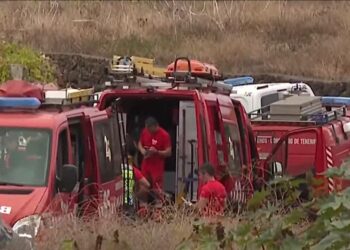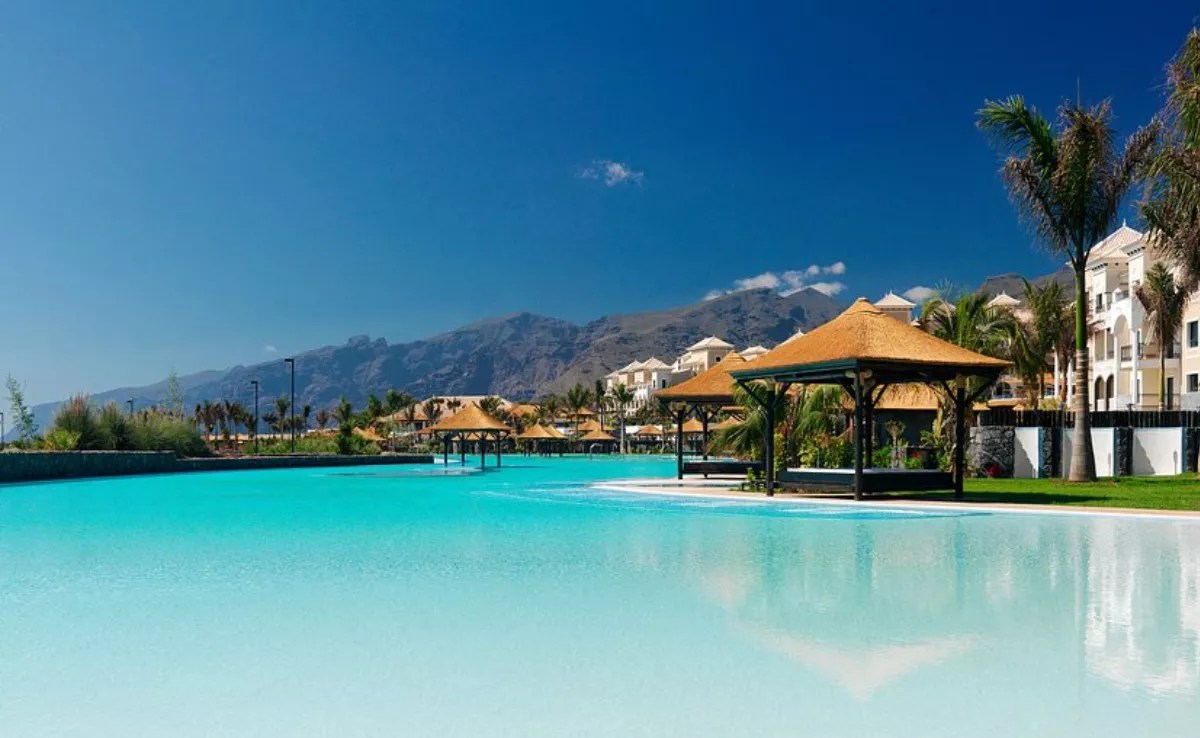When I absurdly inquire, José Luis Fajardo (La Laguna, aged 83), seated alongside his brother Julio in Los Limoneros (Julio serves as his biographer and primary critic, being the author of the text for the book dedicated to his brother in the Library collection of Canary Artists), José Luis responds, “Well, visit the website Fajardopintor.com and all the information is there.”
He is indeed correct. I cannot demand the biography of a painter of his stature, a significant artist. Our conversation then shifts to the Transition and the preceding decade. Julio remarks in the aforementioned book: “Life in the 60s revolved around Paseo de Recoletos and Café Gijón. El Gijón was akin to what today is a call centre for emigrants: akin to the honeycomb where all the flies gather.”
Subsequently, it appears that José Luis, who is six years my senior, has connections with numerous individuals I encountered, and it turns out we traversed Madrid nearly concurrently, particularly during my internship at Pueblo, sharing experiences with the same characters and the same eccentric events that transpired before and after the dictator’s demise.
José Luis suggests I read the latest publication by his friend Manuel Vicent. On my return journey to the Port from Los Limoneros, I made a stop at Agapea de La Orotava and purchased “Una historia particular,” which is more of the same but brilliantly articulated, reflective of the precise writing style of Vicent that captivated me since I first read “Tranvía a Malvarrosa.”
Vicent is a friend of the artist, as is Raúl del Pozo, with whom I once drove from Roncesvalles on the Camino de Santiago, in times long gone, and together we attempted to piece together the crime of the Germans in Santa Cruz, supported by photographs from Raúl Cancio. I was just a child, whereas Raúl had moved on, yet he was the young star reporter at Pueblo.
I also crossed paths with Umbral during my attendance at the Colpisa councils, although he was always evading social encounters. His interests were truly limited. Thus, I assert that, in lieu of an unnecessary biography of José Luis Fajardo, our shared acquaintances suffice to fill in the gaps, more so his than mine, as only a few of them endure today.
-Well, please tell me how it all began.
“After the doubts and hesitations characteristic of a restless youth in the fifties (and few remain), navigating the challenging post-war era, with common educational methods and, thankfully, surrounded by individuals who acted as cultural guardians, I sought to find the purpose I wished to attribute to my existence.”
-And what was that purpose?
“Well, most assuredly it was painting. The first venue that welcomed me, my inaugural exhibition, took place in Puerto de la Cruz, at the Institute of Hispanic Studies, led by Eduardo Westerdahl and Analola Borges. This occurred in 1962, followed by another in 1963 at the Municipal Museum of Santa Cruz.”
(A short while later, in that modest assembly hall of the IHE, his brother Julio would enchant the local young progressives with Atahualpa Yupanqui’s melodies. Among the first to defy the prevailing Franco regime were Margarita Rodríguez Espinosa, Carmita Álvarez, Jesús Hernández, Luis Reverón, Pepe Rodríguez Espinosa, Carmen Rosa Torrents, Layo Santaella, José Javier Hernández, and a few others.
This enthusiastic cohort composed the Student Section, under the loose guidance of Analola Borges. While she may not have been excessively left-leaning, she certainly supported and protected them, fostering their cultural enrichment. They weren’t heavily politicised, merely content with the camaraderie found there, including myself.)
-José Luis, how we have transformed. That Coca-Cola song encapsulates it.
“I firmly believe that any past period was indeed worse.”
-And how am I to express that here?
“With the necessary nuances, of course. I could never persuade the overly conservative, the Adamists, nor those who stagnate against the flow of life.”
-Life evolves.
“Life is inherently dynamic and vibrant; the antithesis is death and utter darkness. Undoubtedly we have evolved, thankfully. When I was young, my father installed a telephone in his office. It lacked numbers, crafted from black Bakelite, with a rotary dial;
I would keep vigil for hours to connect with Barcelona, seeking to achieve the elusive conversation, after traversing half of Spain and overhearing the various telephone operators’ concerns regarding the health of their loved ones and other more private inquiries of which I was a privileged listener. Hence, something shifts daily, amidst his steadfast personality, of which there is a multitude.”
-Do we change for the better?
“We have transcended a particular form of isolation, having moved past an Empire and navigating through history to construct our present.”
-Is society in a healthy state?
“Well, I believe that this splendid mix we have, nestled within valleys, has been filled with routes leading us toward respect, a sense of pride in our identity, and dignity.”
-That strikes me as sheer optimism.
“I am inherently optimistic; I believe we have had to exist within a complex yet healthy society, one that must continuously adapt to reality, occasionally surprising with its vast possibilities.”
(It turns out that we scarcely discussed painting. He only mentioned that a prominent local builder once commissioned him to create the largest painting he had ever produced. “Load it onto a van and transport it to such-and-such place,” he instructed.
This was in Madrid. He completed the commission and received a million pesetas at the time. Nevertheless, he was somewhat guarded, without elaborating too much, the humanist José Luis Fajardo, whose humanistic views have been well established.
Additionally, he has just released a book of drawings of La Laguna, featuring texts by Juan Cruz, which express his affection for the city and for corners that perhaps I, or anyone else – aside from Julio and himself – might not know.
I have perused the book and have journeyed through it, those strokes portraying a fragment of La Laguna of the 60s that I experienced, initially studying Law and later navigating the School of Journalism.
It is a cloth-bound volume, published by Tintablanca, which I believe has also published works relating to other World Heritage cities.)
“That book encapsulates my memories.”
-I perceive it embodies much more.
“And the leisurely strolls with pals seeking answers to the questions of adolescence, imbued with the atmosphere of humidity.”
-It’s La Laguna. Quite insignificant.
“Indeed, it is La Laguna. The Portuguese and Galician maguas. Carpenters adorned their windows in Portuguese style while farmers tended to terraces; concealed chimneys from the forges where the bars were moulded. I endeavoured to encapsulate these recollections within this commissioned illustration book.”
-I feel compelled to inquire about art. Are there those who manage to live through it?
“The art market, like all markets, is unpredictable and speculative, subject to variables that are international, national, and even local. It has perpetually been challenging and intricate; it is not merely a contemporary phenomenon.”
-And do you find it appealing?
“Indeed, but I am more captivated by the workshop and the daily routine. My grandfather, a painter who introduced me to this craft, offered guidance that remains pertinent to many situations. He advised me: “If you find yourself with nothing to do, just sweep the workshop.”
-What represents La Laguna?
“A Macondo.”
-Is that so?
“Yes, indeed; it is a fascinating Macondo-like island.”
-Why so, José Luis?
“Because its characters are universal and yet deeply rooted in the essence of the neighbourhood.
-From an alternative reality, then.
“They inhabit different emotional moments while they assess current affairs with a wisdom characteristic of enchantment and the absence of time.”
-Is there an unending source of Lagunerism?
“I am unsure.”
-Which is preferable, in your Macondo, yesterday or today?
“No, no, both. Every moment carries its own longing.”
(Then Julio begins sharing anecdotes about celebrated Lagunera figures – for they are, even if they did not originate in Aguere. – Professor Felipe González Vicén was collected by his son at the Café Alemán and he dove headfirst into the car. Once they opened the opposite door for him and he tumbled onto the road.
Julio is the esteemed chronicler of La Laguna, although he now has a rival: Professor Juan-Manuel García Ramos has recently released a delightful book featuring dialogues among Don Felipe González Vicén, Don José María Hernández-Rubio, and the macho of Ayala, Don José Peraza, set against the backdrop of the Bar Alemán and other locales.
The book is already on sale and is generating considerable anticipation.
-Every Lagunero, José Luis, has one or more figures of reference.
“No, I don’t.”
-But they do exist.
“For me, they are those who linger on in the anecdotes and tales that circulate in the corners and adjust in every discussion to suit the occasion as the day unfolds.”
(When Los Sabandeños went on tour, with Julio Fajardo accompanying them, every now and then, in the hush of an interlude, possibly disturbed by an errant note from a slightly out-of-tune guitar, someone would exclaim, mimicking nostalgia: “And further and further away from Casa Pepe el Gago.”
Pepe el Gago, with his manises and his pyrriaco, was a Lagunera icon, just as Rubén el Mono was, along with the one known as Colonel Fagot because he couldn’t play the bassoon).
-José Luis, are we Canarians inherently talented in the arts and literature?
“I am not certain, but it is plausible that our insularity and the concealed essence of that Macondo inspire specific vocations and abilities. What I do know, based on my observations, is that fortunately, we are a creative populace. I have no doubt about this.”
-La Laguna strikes me as utterly surreal, especially as I am not deeply acquainted with it.
“Surrealism took root and flourished in Tenerife, and André Breton proclaimed it, serving as its pontiff. It was not mere chance that they coincided here and have since claimed the island’s corners. You may well be right that La Laguna embodies pure surrealism.”
(Let us say we are conversing about Madrid, like Sabina. José Luis frequented the Gijón café, where only Álvaro de Luna and a handful of others are left. He laments the illness of his friend Cervino. He expresses sorrow for Manuel Vicén’s sadness and delights in, as I already mentioned, his book.
He discusses the success of the presentation of “La Laguna, a long journey through art”, which I have previously referred to, illustrated with his fine and bold pencils, featuring strokes that hint at the magic of what was, or still is, his Macondo. He states that he feels most at ease in his studio, or workshop, as he calls it, “wherever he has it.”
His brother Julio writes in the book from the Library of Canarian Artists: “José Luis Fajardo has always possessed an extraordinary ability to forge friendships and to be cherished by those around him. Everything eventually gravitates towards these individuals; one simply needs to allow time for the necessary periods to elapse… his artwork is not a chronicle of a specific moment; it is timeless and universal as it narrates a story that transcends time.”
Yet I was not familiar with José Luis Fajardo, a humanist and a lover of life, despite the challenges life has presented him. It has been a true pleasure).
















